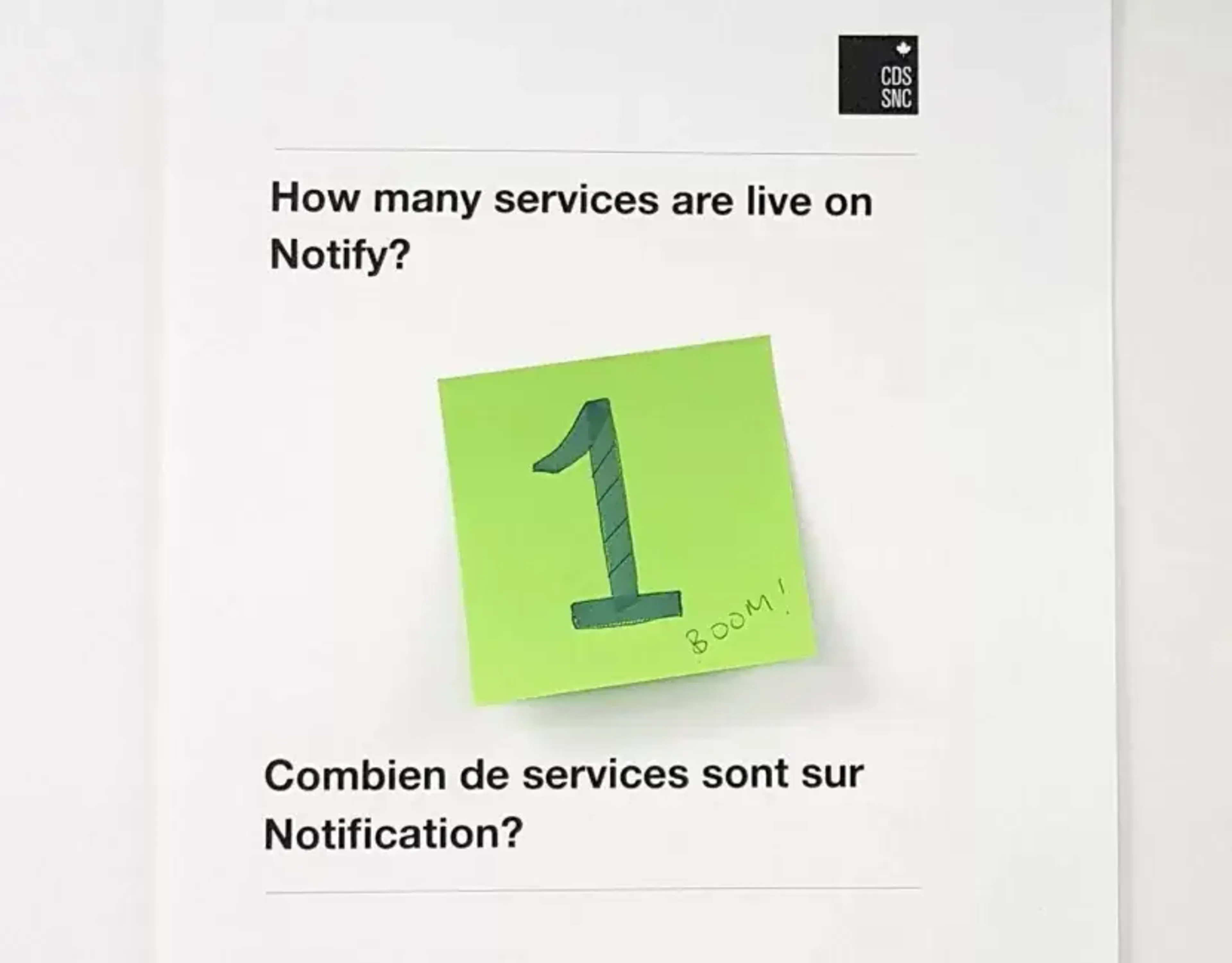
Ross Ferguson
Director

In the world of digital government, there is a growing conversation around digital public goods and infrastructure: what they are, what they can do for governments and citizens, and how collaboration across governments underpins their success.
At Public Digital, we keep coming back to Notify as a shining example of the cross-government collaboration that this kind of infrastructure needs to work.
Between 2018 - 2020, I served as the Government of Canada’s first Head of Product (and later Director of Platforms) in its Canadian Digital Service. During the early days of the Canadian Digital Service we helped a range of government departments and agencies establish or overhaul their digital services. We aimed to make digital services of the highest quality, as widely available as possible, and run in a cost effective manner.
With one of our collaborations we worked with the Canada Revenue Agency to do important work helping 700,000+ Canadians with low incomes to file their taxes online. By filing a tax return, those people could be automatically entitled to $1.7 billion in benefits and refunds.
The feedback from those using the tax returns service repeatedly expressed the need to receive confirmation of the successful completion of their tax return, and then later, the need to be notified about the benefits and refunds they had qualified for. In the past, these small steps to track the status of your application could be the source of disproportionate stress: the inevitable hunt for that scrap of paper with the code on it, or an afternoon spent on the phone waiting in a hold-queue.
Time and again, we saw the same problem around a lack of notifications for users being raised across government services. Perhaps a change in someone’s circumstances now qualified them for a new veterans' benefit, or they needed to book in for a citizenship ceremony, or they wanted to report a cybercrime online. In all these instances, people needed timely, convenient notifications sent to their phone or inbox, and government needed a simple and cheap way to create and send those notifications.
Having established the common user need, we now had to meet
it. In days gone by, we would have seen each department - maybe even
each service within a department - introduce and run its own
notification product. But thanks to trends in commoditisation and
consumerisation of technology and the possibilities presented by open source standards and new communities of practice,
Canada was presented with the chance to do things differently. The
opportunity would save millions of dollars, years of effort and make
everyone’s lives that little bit better.
That opportunity was to reuse a product devised in another country to meet a very similar need. In the UK in 2015, the Government Digital Service had created GOV.UK Notify to provide transaction notifications by email, text or letter. Run centrally, it meant any public sector service could integrate Notify on a self-service basis at a fraction of the cost involved if each service were to attempt to do it alone. In a few quick and simple steps, they could be sending consistently high quality notifications to recipients who needed them.
Since May 2016, GOV.UK Notify has scaled to be part of 7,000+ services in the UK that have sent 6.7 billion messages, and is set to save the UK government over £35m a year. Notify has made billions of everyday government transactions easier for the British public. It was not only central to the UK government’s pandemic response, but is now proving to have an international reach.
In designing GOV.UK Notify, GDS set out with one goal: to make everyday transactions with the government easier for the British public. But because the GOV.UK Notify team made some smart decisions - to make their code open, to use interoperable standards, and to post about their goals and lessons learned from the delivery - Notify did much more than that. Years on, Notify has become an international success story and an example of what is possible when governments invest in digital public goods and infrastructure.
Based on the UK model, code and documentation, Canada was able to copy, stand up, and test its own instance of Notify within a few days in 2019. Within weeks, we had begun improving existing capabilities in the product and adding our own to meet the needs of Canadian citizens, principally the need for multilingual interfaces and messages. In a matter of months we were able to launch GC Notify, capable of sending notifications to every Canadian for as little as $4,000 a month, meaning that all those government services could afford to focus their resources on things that were unique to each service and its users.

The code for GOV.UK Notify was not reusable at the push of a button, but the UK had taken a deliberate policy decision to release the code under an open source licence. Canada was able to take advantage of this because they made a decision to fund enduring, multidisciplinary in-house delivery teams. The other critical factor was that both the UK and Canada teams were working in the open and invested time in seeking out opportunities to share with other practitioners.
As we developed GC Notify in Canada, we were able to compare and share code and learning with the equivalent team in the UK, followed by an equivalent team in Australia, who had also embarked on their own instance of Notify. Each of these ‘Notify’ products existed independently. The improvements made to one could be adopted by all, and yet they could still be customised to a local context and would remain unaffected by problems encountered by others.
Today, the UK and Canadian instances of Notify are going
strong and being used at population-scale. Such has been the demand for
the Canadian version of Notify, that in just over 3 years it has been
adopted by 321 services to send over 75 million notifications. While Australia has retired its product, in the United States, Brazil and other countries, Notify is becoming an integral and routine part of public service delivery.
There are several recurring interactions and patterns, like these public service notifications, which are common across government services around the world. With the maturity of today’s digital concepts, practices and technologies, there are more opportunities than ever before to confidently reuse products across services. We can plainly see the benefits of reuse across government operations, from verifying identities, to issuing payments to citizens, through to helping families deal with bereavement.
The example of Notify demonstrates that when experimenting or scaling up operations to deliver digital services, we can benefit by taking a public goods and infrastructure approach. By actively contributing to this open ecosystem, we not only help others seeking to reuse our solution, but will enhance our own products and services by opening them up to valuable scrutiny, iteration and validation.
Time after time, we have seen that it is important to look sideways across our own public sector, and beyond our domains and borders to explore what we can offer and learn from others; it is only by doing this that governments will successfully respond to people’s raised expectations in the internet era.
That is why Public Digital emphasises the value of participating in
communities of practice as being as important as technology choices or
iterative delivery. Without forums for sharing learning, wonderful things like Notify might never have achieved the impact we can celebrate today.
To hear more from us on internet-era ways of working in public and private organisations, subscribe to Public Digital's fortnightly newsletter.

Director